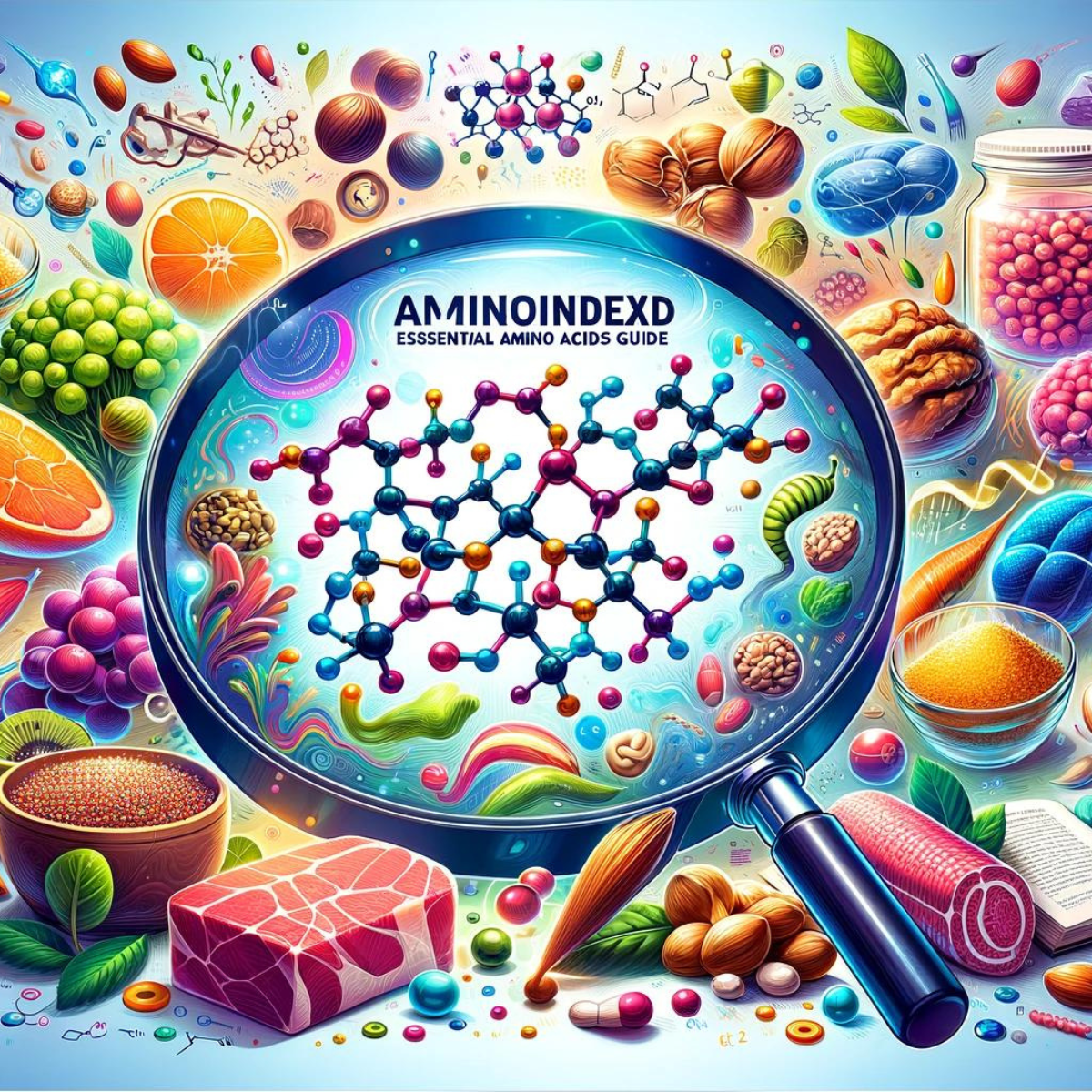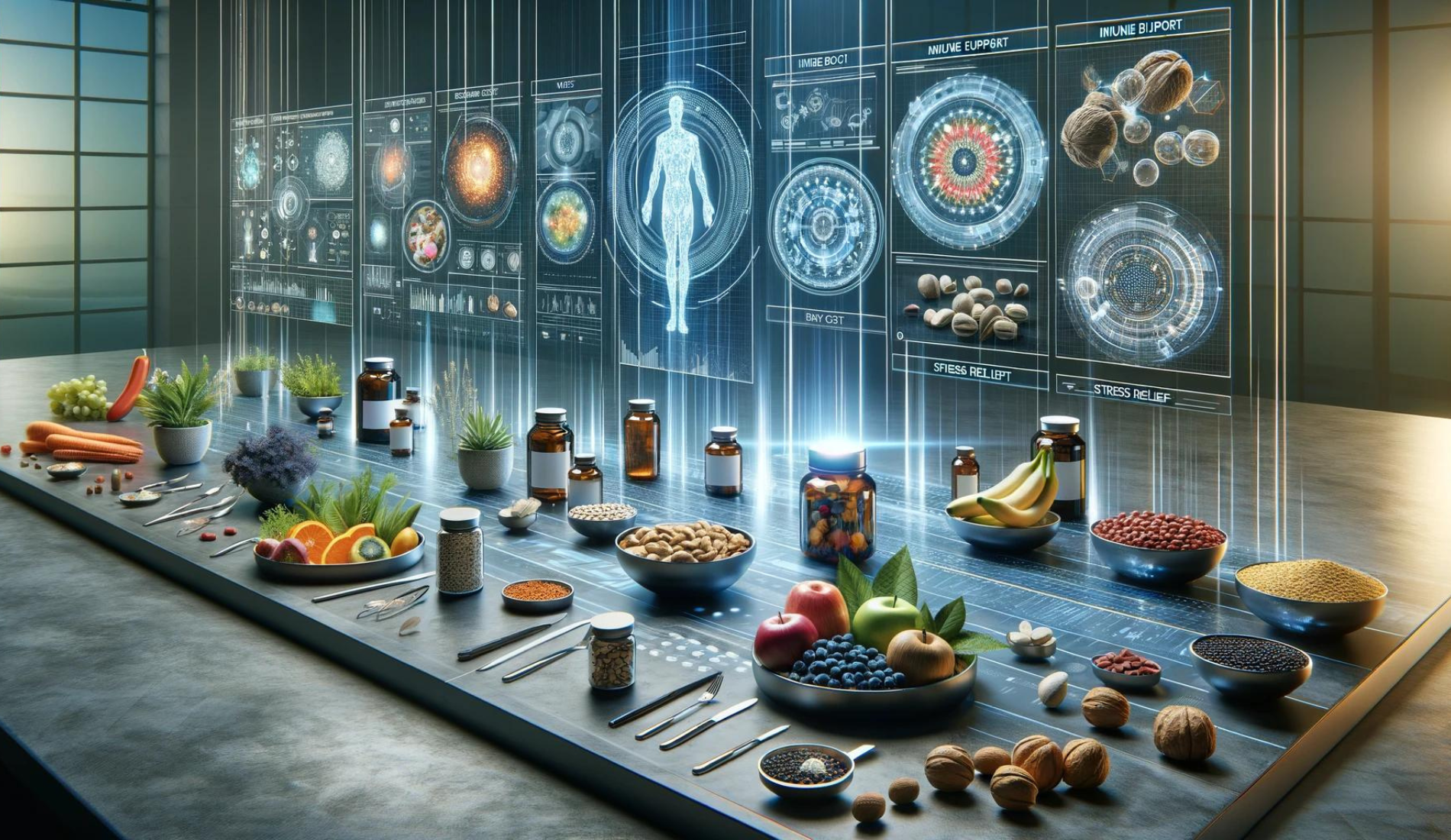Table of Contents
Introduction to Iron
Iron is a cornerstone of our health, a vital mineral indispensable in numerous bodily functions. It drives oxygen transportation and is pivotal for our energy levels, immune strength, and cognitive function. Yet, the balance of iron in our system is a delicate dance—too little, and we face fatigue and weakened immunity; too much, and we risk serious health complications. In 'Iron Influence: Powering Your Health with This Essential Mineral,' we delve into the essence of iron in our diet, its profound benefits, the risks of deficiency and overload, and how to achieve the perfect equilibrium for optimal health.
The Multifaceted Benefits of Iron
Iron plays a crucial role in the body, impacting various physiological processes and contributing to overall health and well-being. Here are some of the key benefits:
- Oxygen Transport: Iron is a core component of haemoglobin, the protein in red blood cells responsible for carrying oxygen from the lungs to the rest of the body. Adequate iron levels ensure that all body tissues receive the oxygen they need for energy production and metabolic processes.
- Energy Production: Iron directly influences energy levels and vitality by supporting oxygen transport by supporting oxygen transport. It helps convert nutrients into energy, which is vital to cell energy metabolism.
- Immune Function: Iron is essential for the development and function of immune cells. Adequate iron levels support the body's ability to fight off infections and diseases by promoting the growth of immune cells and facilitating their proper function.
- Cognitive Health: Iron contributes to brain health and cognitive function. It synthesises neurotransmitters like dopamine and serotonin and supports cognitive processes like learning, memory, and attention.
- Muscle Function: Iron is essential for muscle health. It helps form myoglobin, a protein that stores oxygen in muscles. This is crucial for muscle endurance and strength, especially during physical activity.
- Cellular Function: On a cellular level, iron plays a role in various enzymatic reactions and is involved in DNA synthesis. This is essential for cell growth, repair, and the proper functioning of all bodily systems.
Identifying Iron Deficiency
Iron deficiency is the most common nutritional deficiency worldwide and can lead to anaemia if not addressed. Recognising the signs is crucial to prevention and treatment. Symptoms of iron deficiency can be subtle at first but become more pronounced as the body's iron stores are depleted:
- Fatigue and Weakness: The most common symptoms resulting from insufficient oxygen reaching body tissues.
- Pale Skin and Mucous Membranes: Haemoglobin gives blood its red colour, so low levels can make the skin appear paler.
- Shortness of Breath: The body struggles to deliver enough oxygen to muscles during exercise.
- Cold Hands and Feet: Poor circulation can result from reduced haemoglobin levels.
- Brittle Nails and Hair Loss: A sign of widespread nutrient deficiencies, including iron.
- Unusual Cravings: Known as pica, craving non-food items like ice, dirt, or starch can indicate iron deficiency.
- Increased Susceptibility to Infections: Iron is crucial for immune health; low levels may lead to more frequent illnesses.
Risk factors for iron deficiency include heavy menstrual periods, pregnancy, vegetarian or vegan diets, gastrointestinal disorders that affect nutrient absorption, and chronic diseases. Early identification and treatment of iron deficiency are crucial for preventing complications and improving quality of life.

Iron-Rich Foods
Incorporating iron-rich foods into your diet is a crucial strategy for preventing iron deficiency and ensuring adequate intake of this essential nutrient. Iron comes in two forms in foods: heme iron, found in animal products, which is more easily absorbed by the body, and non-heme iron, found in plant-based foods. Here's a guide to iron-rich foods from both categories:
Heme Iron Sources (Animal-Based)
- Red Meat: Beef, lamb, and venison are excellent sources of heme iron.
- Poultry: Chicken and turkey, especially dark meat, contain significant amounts of iron.
- Seafood: Fish such as sardines, tuna, and salmon, along with shellfish like clams, oysters, and mussels, are high in heme iron.
- Liver and Other Organ Meats are some of the richest sources of iron, but they should be consumed in moderation due to their high cholesterol content.
Non-heme Iron Sources (Plant-Based)
- Legumes: Beans, lentils, chickpeas, and soybeans are good plant-based sources of iron.
- Leafy Green Vegetables: Spinach, kale, and Swiss chard contain non-heme iron, though combining them with a vitamin C source can enhance absorption.
- Nuts and Seeds: Pumpkin seeds, sesame seeds, hemp seeds, and almonds provide healthy fats and iron.
- Whole Grains and Fortified Cereals: Quinoa, oats, and fortified breakfast cereals add iron to your diet.
- Dried Fruits: Apricots, prunes, and raisins are snackable sources of iron.
Maximising Iron Absorption
Consuming non-heme iron from plant sources with vitamin C-rich foods like oranges, strawberries, bell peppers, and broccoli enhances the absorption of these nutrients. Cooking in cast iron cookware can also add iron to food.
Avoiding tea and coffee during iron-rich meals is advisable, as tannins and polyphenols can inhibit iron absorption. Similarly, calcium-rich foods and supplements might interfere with iron absorption when consumed simultaneously.
By diversifying your diet with both heme and non-heme iron sources and paying attention to factors that affect iron absorption, you can help ensure your iron levels remain optimal for your health and well-being.

The Importance of Supplementation
Iron supplementation is essential for individuals who cannot meet their iron needs through diet alone. It's particularly crucial for those at risk of or experiencing iron deficiency or anomia. Here are the key reasons iron supplementation can be necessary:
- Quick Replenishment: Supplements can quickly restore iron levels in those diagnosed with a deficiency, offering a faster solution than dietary changes alone.
- For High-Risk Groups: Certain individuals have higher iron needs or face challenges in maintaining adequate iron levels, including women with heavy menstrual bleeding, pregnant women, infants and toddlers, people with dietary restrictions (like vegans), and those with health conditions affecting iron absorption.
- Enhanced Absorption and Fewer Side Effects: Modern iron supplements, such as those using liposomal technology or formulated as iron bisglycinate, are designed for better absorption and to minimise common side effects like stomach upset.
- Prevention: In some cases, supplements serve as a preventive measure to maintain healthy iron levels before a deficiency develops, especially in populations known to be at risk.
It's essential to approach iron supplementation with care—consulting a healthcare provider to ensure it's necessary, determining the appropriate type and dosage, and monitoring iron levels to adjust supplementation and avoid excess.
Navigating iron overload, a condition known as hemochromatosis when it's hereditary involves managing excess iron in the body, which can be harmful if left untreated. Iron overload can damage organs and lead to liver disease, heart problems, diabetes, and other health issues. Here's how to navigate and manage this condition:
Navigating Iron Overload
- Causes: Iron overload can result from excessive iron supplementation, repeated blood transfusions, certain anaemias, and hereditary hemochromatosis.
- Symptoms: Early symptoms are often nonspecific and may include fatigue, joint pain, abdominal pain, and loss of libido. Over time, it can lead to more severe complications.
Diagnosis and Monitoring
- Blood Tests: Regular blood tests can monitor ferritin levels (indicating iron storage) and transferrin saturation (indicating the degree of iron binding), which is crucial for diagnosing and managing iron overload.
- Genetic Testing: For hereditary hemochromatosis, genetic testing identifies mutations in the HFE gene.
Management Strategies
- Phlebotomy: Regular blood removal is a primary treatment for lowering iron levels. The frequency depends on the severity of the overload and how well the body responds to treatment.
- Dietary Adjustments: While it's difficult to significantly impact iron levels through diet alone in cases of overload, avoiding iron supplements, vitamin C supplements (which can increase iron absorption), and reducing consumption of red meat can help manage the condition.
- Chelation Therapy: For those who cannot undergo phlebotomy, chelation therapy uses medication to bind iron, allowing it to be excreted from the body. This method is more commonly used for iron overload due to blood transfusions.
Living with Iron Overload
- Regular Monitoring: Keeping track of iron levels through regular blood tests is vital to adjust treatment as necessary.
- Collaborative Care: Management often involves collaboration between primary care physicians, haematologists, dietitians, or genetic counsellors.
Prevention and Awareness
- At-Risk Individuals: Family members of those diagnosed with hereditary hemochromatosis should consider genetic testing and regular blood iron level testing.
- Supplementation Caution: It is crucial to avoid unnecessary iron supplementation, especially in individuals at risk for or diagnosed with iron overload.
Navigating iron overload requires a comprehensive approach, including diagnosis, regular monitoring, and targeted treatment strategies, to prevent the potential damage excess iron can cause to the body. Collaboration with healthcare providers ensures the condition is managed effectively, enhancing the quality of life for those affected.

Innovations in Iron Supplementation
Recent advancements in iron supplementation have focused on improving iron absorption, reducing side effects, and addressing the specific needs of different populations. These innovations are pivotal in making iron supplementation more effective and user-friendly. Here are some of the notable developments:
Liposomal Iron
Liposomal technology encapsulates iron molecules within liposomes, tiny vesicles that mimic the body's cells. This method enhances the delivery of iron directly to the bloodstream, bypassing the gastrointestinal tract, which can minimise common side effects like constipation and nausea. Liposomal iron is particularly beneficial for individuals with difficulty tolerating traditional iron supplements.
Iron Bisglycinate
Iron bisglycinate is a chelated form of iron, meaning the iron is bound to amino acids, making it easier for the body to absorb. This iron is less likely to cause gastrointestinal side effects and does not significantly interact with other nutrients, making it a gentler option for those who need supplementation.
Time-Release Formulations
Time-release or sustained-release iron supplements release iron slowly over several hours, which can reduce gastrointestinal side effects and improve absorption by not overwhelming the body's iron uptake mechanisms. This approach can provide a steady supply of iron throughout the day, aiding in better utilisation by the body.
Fortified Foods and Beverages
Fortifying foods and beverages with iron is an innovative approach to increasing iron intake at the population level. Products like cereals, flour, and juices can be fortified with iron, helping to prevent iron deficiency in the broader community, especially in areas where iron deficiency is prevalent.
Effervescent Tablets and Liquid Supplements
Effervescent tablets that dissolve in water to form a flavoured drink and liquid iron supplements are designed for easy consumption and improved absorption. These forms can be especially appealing to children and adults who have difficulty swallowing pills.
Microencapsulation
This technology involves coating iron particles with a substance to prevent them from interacting with other food components or the digestive tract until they reach the small intestine, where absorption is optimal. This can enhance the bioavailability of iron and reduce side effects.
These innovations in iron supplementation are making it easier for individuals to correct iron deficiencies safely and effectively, with options tailored to meet a wide range of needs and preferences. As research continues, even more advancements are expected to emerge, further improving the management of iron levels in the body.
Practical Tips for Managing Iron Intake
Managing your iron intake effectively is crucial for maintaining optimal health, especially for those at risk of either deficiency or overload. Here are practical tips to ensure you get the right amount of iron from your diet and supplements if necessary:
1. Diversify Your Diet
- Incorporate a variety of iron-rich foods into your daily meals. Aim to balance heme iron sources (like red meat, poultry, and seafood) and non-heme iron sources (such as beans, lentils, spinach, and fortified cereals).
2. Enhance Iron Absorption
- Consume vitamin C-rich foods (like citrus fruits, bell peppers, and strawberries) alongside iron-rich foods to enhance non-heme iron absorption.
- Cook with cast-iron cookware, which can leach iron into your food, increasing your iron intake.
3. Be Mindful of Iron Absorption Inhibitors
- When eating iron-rich meals, limit the consumption of foods and beverages that inhibit iron absorption, such as coffee, tea, dairy products, and foods high in phytates (found in some legumes and grains).
4. Consider Iron Supplements If Necessary
- If you can't meet your iron needs through diet alone, consult with a healthcare provider about the possibility of taking an iron supplement. They can recommend the right type and dosage based on your individual needs.
5. Monitor Iron Intake in Vulnerable Groups
- Pay special attention to infants, young children, pregnant women, and individuals with conditions affecting iron absorption. These groups may require additional iron from supplements or fortified foods.
6. Regular Blood Tests
- Have your iron levels checked regularly through blood tests, mainly if you are in a high-risk group for iron deficiency or taking iron supplements. This will help adjust your iron intake as needed.
7. Be Cautious with Iron Supplements
- Avoid self-prescribing high doses of iron supplements, as excessive iron can lead to toxicity and health issues like heart problems and liver disease. Always follow a healthcare provider's guidance.
8. Stay Informed
- Keep up with the latest recommendations and guidelines on iron intake from reputable health organisations to ensure your dietary practices are aligned with current scientific understanding.
By following these practical tips, you can effectively manage your iron intake, ensuring you get the benefits of this essential mineral without the risks associated with too little or too much iron.
Find Your Iron Solution
Conclusion
Iron is pivotal in numerous bodily functions, from oxygen transport and energy production to immune support and cognitive health. Understanding how to manage iron intake—through diet, lifestyle adjustments, and, when necessary, supplementation—is essential for maintaining optimal health. Individuals can navigate the complexities of iron nutrition by incorporating various iron-rich foods, enhancing absorption, and being mindful of intake levels. Remember, the goal is to achieve a balance that supports your body's needs, improving overall well-being without risking the complications associated with iron deficiency or overload.
Disclaimer:
This article is intended for educational and informational purposes only and should not be construed as medical advice. The information does not replace professional medical advice, diagnosis, or treatment. Always consult with a qualified healthcare provider for personalised guidance before making any significant changes to your diet or health regimen, particularly when considering dietary supplements. Individual needs may vary, and what works for one person may not be suitable for another.
References
- Hurrell, R., & Egli, I. (2010). Iron bioavailability and dietary reference values. American Journal of Clinical Nutrition, 91(5), 1461S-1467S. https://doi.org/10.3945/ajcn.2010.28674F
- Harper, J. L. (2023, August 23). Iron Deficiency Anemia Guidelines. eMedicine from Medscape. Emmanuel C. Besa (Ed.). Retrieved from https://emedicine.medscape.com/article/202333-guidelines?form=fpf
- Beard, J. L. (2001). Iron Biology in Immune Function, Muscle Metabolism and Neuronal Functioning. The Journal of Nutrition, 131(2), 568S. https://doi.org/10.1093/jn/131.2.568S
- Peyrin-Biroulet, L., Williet, N., & Cacoub, P. (2015). Guidelines on the diagnosis and treatment of iron deficiency across indications: a systematic review. The American Journal of Clinical Nutrition, 102(6), 1585-1594. https://doi.org/10.3945/ajcn.114.103366
- Andrews, N. C. (1999). Disorders of iron metabolism. New England Journal of Medicine, 341(26), 1986-1995. DOI: 10.1056/NEJM199912233412607.
- Zimmermann, M. B., & Hurrell, R. F. (2007). Nutritional iron deficiency. Lancet, 370(9586), 511-520. DOI: 10.1016/S0140-6736(07)61235-5.
- Madrazo-González, Z., García Barrasa, A., & Rafecas Renau, A. (2010). Anaemia, iron, transfusion and therapeutic alternatives. A review from a surgical perspective. Cirugía Española, 88(6), 358-368. https://doi.org/10.1016/S2173-5077(10)70041-7



















